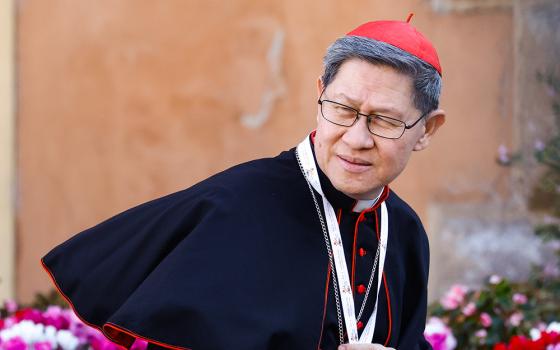Yesterday, I began a review of Mary Eberstadt’s “How the West Really Lost God.” If you did not read that, do so now by clicking here.
As I related yesterday, Eberstadt spends fully half the book examining alternate theories of secularization, critically but sympathetically for the most part, but her treatment of the subject is uneven. And, having set the table so unevenly, one is not surprised to find that the entrée is served before the soup, or that the pasta needs salt.
It is in Chapter 7 that Eberstadt lays out her central thesis, which, as explained yesterday, is this:
[This book’s] argument, in brief, is that the Western record suggests that family decline is not merely a consequence of religious decline, as conventional thinking has understood that relationship. It also is plausible – and, I will argue, appears to be true that family decline in turn helps to power religious decline.
This is an important insight, not least because no one has made the argument previously. Determining causality in broad sociological trends is always difficult, and Eberstadt is at pains not to overstate her case. But, she need not hold back.
She notes that for many people, the experience of childbirth itself is an experience that tends to lead a mother and father to think in more transcendent terms. People use words like “transcendent,” and “ethereal,” and “magical” to describe the event. (N.B. My dear, departed mother was not one of them. Having been awake through the birth of my sister, when it came time for me to be born she instructed the doctor, “Knock me out at the first pain and wake me up when the hairdresser shows.”) Eberstadt notes that the primordial familial relationship is a central theme in humanity’s artistic record, and how violations of the norms of family life make for the best tragedies, from Medea to Lear to Michelangelo’s Pieta, which captures what for most people is the most horrific of human events, the death of a child. “Thus does a complementary religious anthropology begin to emerge, grounded on the primal fact that the mother-child and father-child bond, as no other, appears to push at least some people toward an intensity of purposeful connection with the divine that they might never otherwise have experienced,” she writes.
Perhaps the most compelling section of the book is found on pp 160ff., in which Eberstadt points out that the link between familial and religious decline might have a lot to do with the fact that the Christian story is itself brought to us in familial garb. “Like it or not, the Judeo-Christian tradition has anthropomorphized the Deity in one particular way: by analogy to a wise, protective, loving, ever-present male parent. The fact that many children, in an age of broken or unformed natural families, do not associate those adjectives with their male biological parent makes for elemental, ongoing confusion and heartache among some of the subjects of the Marquardt/Glenn study [which she had previously cited].”
In these same pages she also makes the obvious, but often overlooked, point that “People do not like to be told that they are wrong, or that those whom they love have done wrong.” Surely, the cult of self-esteem can, and should, always and everywhere be exposed as a profoundly anti-Christian project. The Gospel call to chastity may stir some hearts and the Gospel call to charity may stir others, but if the Gospel call is robbed of the call to repentance, it is no longer the Christian Gospel. I do wish Eberstadt had spent more time on the effects of urbanization on the family, which she acknowledges far too briefly. This, as well as the emergence of a spread-eagle capitalism that accompanied urbanization, is a bigger part of this tale than Eberstadt lets on.
Having stated her thesis, the frustrations with Eberstadt’s crimped moral compass and predictable neo-con asides, only mount. For example, on page 170 she cites Charles Murray (always a dangerous proposition) and W. Bradford Wilcox in their work correlating economic well-being with traditional family structures. No one can doubt the link, but here Eberstadt’s praiseworthy willingness to see causation as a two-way street ceases: She moves on to the horrible social consequences of the phenomenon without pausing to think that maybe poverty, and the pathologies that accompany it, may cause family break-ups to be more frequent.
On page 172, Eberstadt makes the case that “the spread of non-traditional families further weakens the traditional family in another way: because nontraditional and antitraditional families encourage skepticism and even mockery of the notion that the traditional family is a legitimate norm.” I suspect that the mockery is confined to the professoriate, who tend to inflate the importance of their analysis in any event. But, Eberstadt’s very next sentence demonstrates her neo-con bias in all its unchristian vigor: “Some do so inadvertently – as when, say, the sheer volume of fatherless homes leads people to treat all families with moral equivalence for the sake of politesse.” Really? I find that “for the sake of politesse” comment very ugly. Might it not be that many people approach such tragic phenomenon as fatherless homes with a strong sense of compassion and are not willing to kick a fatherless family when they are down, still less to prove a point?
I note in passing that on page 173 Eberstadt writes that the fundamental story of Christianity is “the creation of the Son of God as man,” which happens to be a heresy. “Genitum, not factum,” as the Creed says.
Eberstadt correctly notes the plight of the black family in America, and the controversy surrounding the Moynihan Report back in 1965, and how the situation has only gotten worse since then. She is correct, indeed, that this is a huge societal problem. But, black Americans also continue to register the highest rates of religiosity in the country. At the very least, Eberstadt needed to stop the gloom-and-doom scenario for a moment and wrestle with this fact.
There is something prim, and as I say, crimped about Eberstadt’s view of the Christian faith. She writes, “The point of being a Christian is to save one’s soul and to get to heaven. Many tests and requirements might be involved along one’s earthly path to that ultimate goal – good works, attendance in church, the practicing of virtues and the resisting of vices, and so.” Not a word about love. This is the neo-con problem, and a large part of the reason for religious decline. The face of Christianity in America is too often a scolding, finger-wagging prelate or minister or, in Eberstadt’s case, intellectual. Or our understanding of Christianity is too wedded to a set of neo-con understandings (“politesse”!) that lack natural, let alone supernatural, empathy. Not once in this important book does Eberstadt really come close to the heart of Christianity and its social relevance which was captured, as well as by anyone, in Balthasar’s observation: Only love is credible. This is the secret of Pope Francis, is it not? In word and gesture, he reminds us that God loves us by showing that he loves us. I suspect that in the fight with secularism, it will be the image of Pope Francis next week, acquiring the smell of the sheep when he visits Lampedusa and communes with the immigrants there, many of them non-Catholics, it is that image for which secularism has no answer. I do not know Eberstadt, so I do not know what she and her friends at the Ethics and Public Policy Center really think of Pope Francis. But, if they are not made uncomfortable by him, they are not paying attention. He makes me uncomfortable every day, uncomfortable and excited to be a Catholic.






